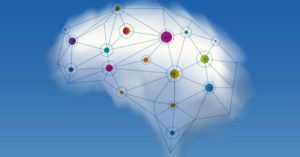 Have you ever attended a technical training event, and three days later, couldn’t really remember what you were trained on? In trying to recall what you just sat through, your mind comes up with the mental equivalent of a desolate Wild Wild West ghost town, perhaps with a sad tumbleweed or two passing through. You are not alone! At one point or another, we’ve all fallen victim to a training presentation that simply does not stick.
Have you ever attended a technical training event, and three days later, couldn’t really remember what you were trained on? In trying to recall what you just sat through, your mind comes up with the mental equivalent of a desolate Wild Wild West ghost town, perhaps with a sad tumbleweed or two passing through. You are not alone! At one point or another, we’ve all fallen victim to a training presentation that simply does not stick.
[pullquote]Training is an opportunity to engender a self-propelling domino effect of learning that can better humanity.[/pullquote]As a training developer, it’s my job to prevent students from walking away empty-minded. Come to think of it, this is also the goal for most sales people. You want your presentation to make a lasting impression: You want something to hit home — to stick —for the other person, in order to produce results. Whether those results are improved on-the-job performance or the President’s Club Award for Outstanding Sales, it doesn’t matter. Recognize that training is so much more than a stand-alone event: It is an opportunity to engender a self-propelling domino effect of learning that can better humanity. “Well, when you put it that way, serving as a Trainer is an honor and a privilege!” my colleague said to me. Yes, indeed it is!
So what ultimately makes the difference between a training presentation that produces results and one that doesn’t? What is the one secret to designing an effective presentation that sticks? Most run-of-the-mill trainers train for the affair, which makes training a mortal incident that dies when the bell rings. But the most effective trainers realize the true opportunity of training and humanize it. The key to it all is this: Relate to your audience. When it comes down to it, teaching is about reaching people. But you can only reach people if you know what matters to them, what makes them tick.
Most people fall into four main personality types, and each type receives ideas and absorbs information in their own way. The ability to quickly assess someone’s personality type comes with time and practice, but once you can do that, the world becomes your learning oyster. So what are these personality types?
- Drivers
- Expressives
- Amiables
- Analyzers
Drivers are assertive but not responsive. They control their emotions and are usually the stubborn, tough students in the room. They like efficiency and effectiveness and are driven by tasks rather than people. They like to make the decisions. To train Drivers, use facts and logic. They prefer a business-like efficiency and are straight to the point, preferring to see all their options and hear all the facts rather than hear personal assurance.
Expressives are impulsive, reactive and excitable. They are usually easily liked, social and enthusiastic. They take risks and tend to be more creative. To train Expressives, use fast-moving, colorful stories, always highlight the benefits to them, and utilize a friendly delivery and demeanor — it goes a long way.
Amiables are not assertive but responsive. They are agreeable, respectful and emotionally expressive. These are the people that don’t like to ‘rock the boat’ — they are low risk takers, favor security, and are sensitive to feelings. To train Amiables, understand that they care about personal interests, personal assurance, and they appreciate things presented as easy and low risk. Convenience wins with them, as do team environments because of their innate inclination to depend on others.
Analyzers are precise, systematic and business-like. They aren’t quick to make decisions and have a general mistrust for persuasive people. They are motivated by logic and facts. To train Analyzers, stick to specifics, and be upfront with expectations — they will respect you for it. They are not the most flexible people, but you will succeed when referring to actions and results.
[pullquote]Humanizing the training event means simply communicating to people and taking individual needs into consideration.[/pullquote]When interacting with your audience, you will naturally pick up clues as to which personality type each person falls into. There will be times when someone may fall into two or more categories: play on the most dominant one. Humanizing the training event means simply communicating to people and taking individual needs into consideration. Understanding personality types helps you to relate to your audience and custom-tailor a message in a manner that makes sense the first time around. This is a golden ticket to delivering presentation that resonate with your audience. You will become known for effective trainings and memorable presentations in no time at all.






